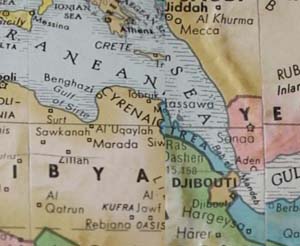Lior Neiger | Globe, video, 3 min., 2003

Divided in two, either side of the screen features a globe turning quickly and slowing to a halt. Each time it stops, a random encounter is created between two geographical areas. Tension is thus generated between the representation of reality in each of the two screen parts and the new place created by the juxtaposition of the two, attesting to the potential of border changes, migration of nations, the movement of continents, etc. The work touches upon questions of immigration, occupation, colonialism, globalization, arbitrariness, and play (it contains an element of a casino game). The straight dividing line created by the split screen alludes, at times parallels, to straight borders marked in the course of history throughout the world (such as borders between states in the United States and between countries in Africa). The work elicits questions concerning knowledge and orientation (or the lack thereof), confronting us with the realization that between every two spots in the world there is always some kind of connection (whether economic, political, geographical, historical or cultural). If we do not know what that link is, it is only because we, as viewers, lack knowledge about it. Much attention was devoted to the formal and color accord of the geographical combinations, but the idea of the “unexpected” encounter is nevertheless convincing.
Aditional Exhibitions
-
Zeev Engelmayer | The Daily Postcard
Zeev Engelmayer | The Daily Postcard
-
Be’eri Plant Bed
Hosted Project
Curator: Nivi Lehavi
-
Structures
Weaving in Israel, from Functionalism to Fiber Art Group exhibition
Curator: Dr. Noga Bernstein | Assistant Curator: Aya Armoni
-
Gur Inbar
Yarn of Clay
Curator: Galit Gaon | Assistant curator: Tzafi Sivan Spivak
-
Fatima Abu Roomi
Close to Herself
Curator: Prof. Yael Guilat
-
Siona Shimshi
Textile Patterns in Her Own Hand
Curator: Yuval Etzioni
-
Eternal Spring
Mambush Tapestry Workshop, Ein Hod, 1966–1985
Curator: Zeela Kotler Hadari | Assistant Curator: Yuval Keshet
This is a test-run of the website, thanks for your patience! Your input is welcome. info-museum@herzliya.muni.il </ strong>